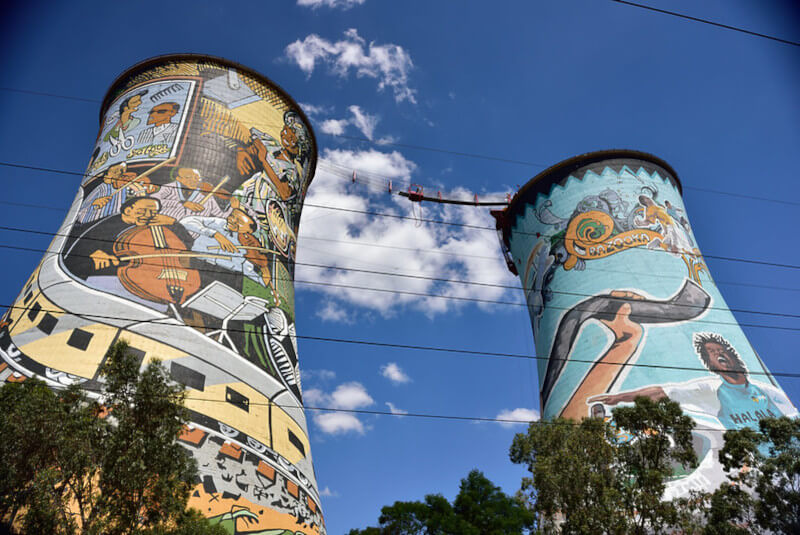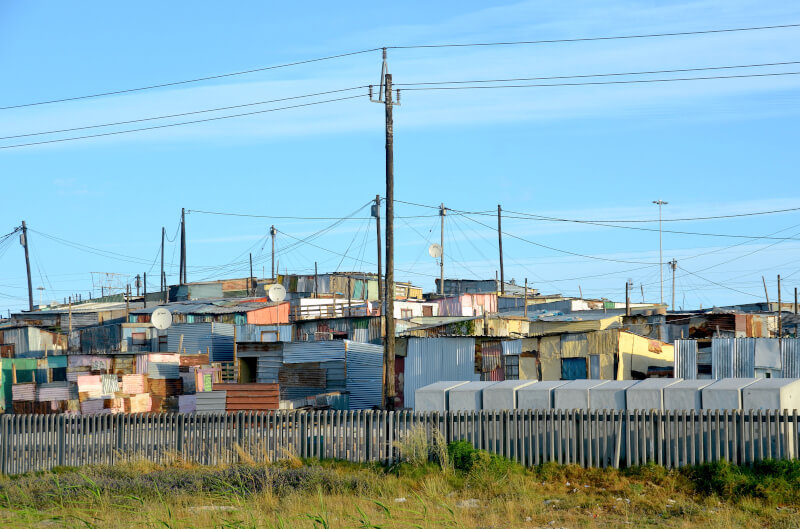Both the townships of Soweto, which are included in the metropolitan area of Johannesburg and Khayelitsha, which is a large township located to the east of Cape Town, are working to shed their reputations as destinations for “poverty tourism.” These revitalized townships are looking forward with optimism to an ambitious future that will include new landmarks, modern theaters, community centers draped in street art, gourmet eateries, and coffee shops.
The Historical Landmarks of Soweto

Soweto is an acronym that stands for “South Western Townships.” Its history can be dated back to the 19th century when the region was established as a residential neighborhood for people of African descent in South Africa. It all started in Kliptown, which was originally mapped out in the year 1891 on a piece of land that was a part of the Klipspruit farm at the time.
Nowadays, Walter Sisulu Square, which was named after the well-known anti-apartheid resistance activist, serves as the district’s primary gathering place. On the 26th of June, 1955, Sisulu was one of the three thousand members of the Congress of the Nation that assembled at this location to write the Freedom Charter. The 10 explanatory statues that are affixed to the tops of the pillars serve as a representation of the charter’s core philosophical concepts and flanked one side of the expansive grassy plaza.
In addition, the plaza is bordered on either side by a bustling traditional market, a convention center, the Soweto Hotel, and a tourist information office. The Freedom Charter Monument may be identified by the conical brickwork tower that is located on the north side of the square. This tower is reflective of old African architecture. An x-shaped skylight throws a symbolic “sign of freedom” over the everlasting fire that burns within the monument. This ‘mark of freedom’ is similar to the cross that appears on a voting ballot.
The June 16 Memorial Acre is a place of remembrance that was established in 2015 to pay tribute to one of the darkest chapters in the history of Soweto. On this day in 1976, a nonviolent student protest was forcefully halted by the police, resulting in the deaths of over 200 youths on the first day of the disturbances. At this mostly outdoor location, a remarkable array of modern murals and potent artworks have been commissioned to create a lasting memorial to the tragic events that took place here. The intention is to establish a path for tourists to follow from this location to the memorial and museum that will be named after Hector Pieterson, who was 12 years old when he became one of the earliest victims on that tragic day.
A Modern Take on the Soweto Look
The fight against apartheid is an important part of Soweto’s history, but life in this bustling metropolis of more than 1.2 million citizens is not only about the past. The quality of life in this area is being significantly improved by the proliferation of new enterprises and institutions. A wonderful illustration of this is Thesis, a store, and cafe located in the neighborhood of Mofolo. The young, hip people who are the brains behind this concept fashion company design colorful streetwear that features graphic phrases and boldly patterned fabrics. In addition to that, they have a running group that gets together on Saturday mornings to run the ten kilometers around Soweto.
The Box Shop currently has available for purchase a variety of striking garments designed by up-and-coming local fashion designers. This unique boutique and coffee shop is made out of repurposed shipping crates, and it is located on Vilakazi Street, which was once home to two people who were awarded the Nobel Peace Prize: Nelson Mandela and Desmond Tutu. This area is the epicenter of tourism in Soweto because it is home to both of their former residences as well as a modest but very well-attended museum dedicated to Nelson Mandela. However, the strip is also very popular with the locals, who frequent the many lively and stylishly tailored bars and restaurants in the area, such as the trendy Vuyo’s and Wine Bar.
A Wine Bar in the Township of Soweto?
Yes, and in addition to that, the Soweto Theatre hosts a yearly wine festival every year. Around 200,000 tiles in bright hues of blue, yellow, and red cover the outside of the three performance areas that come together to form this cultural powerhouse. Throughout the year, this venue plays host to a large number of other events and shows, including the television competition South Africa’s Got Talent. Even if there isn’t anything playing, it’s still worth going to the theater just to look at the interesting artwork and exhibits that are shown in the lobby.
If beer is more your thing, then you should head to Ubuntu Kraal Beer Garden, which allows you to gulp down the numerous on-site produced ales of Soweto Brew Co, which currently belongs to Heineken, who is striving to transform Soweto Gold lager into a widespread brand.
Having a few beers at this establishment can give you the confidence you need to attempt the bungee leap from the rope bridge that is suspended between the Orlando Towers which are located nearby. If such high-octane activities are not your style, you can have some deliciously braaied meats and another Soweto Gold at the Chaf Pozi braai restaurant while gazing up at the skyscrapers and taking in the massive murals that adorn their exteriors.
Alterations in Khayelitsha

The township of Khayelitsha did not appear until the middle of the 1980s; nonetheless, the most recent population figures depict a staggering 2.4 million, making it undoubtedly the largest township in South Africa. On the other hand, there was never any formal planning done for it, and it is a location that is substantially poorer than Soweto, with a lot less formal infrastructure.
The opening of the Isivivana Centre in 2016 marked a significant development in this area. This functional and artistic venue has been under development for the past six years, and it now houses several organizations and charities working toward social change, in addition to a library, a cafe, and the chic Bertha Movie House. The outside is brought to life by two enormous murals: one depicts a stylishly dressed African female by Breeze Yoko, while the other depicts an elephant by Falko One.
Get in touch with the Zimbabwean artist Juma Mkwela if you are interested in seeing more street art in and around the Khayelitsha neighborhood. Not only will you get to view some amazing murals while on his excursions throughout the township, but you’ll also have the opportunity to assist local inhabitants with the maintenance of their veggie gardens, which are bright spots of color and verdant growth in the otherwise barren terrain of the Cape Flats.
In the little 18 Gangster Museum, which is housed in a repurposed shipping container, there is an exhibition of even more inventiveness. In one half of the shipping container is an exhibit that uses text and graphics to educate visitors about the dangers of gangsterism, and in the other half of the shipping container is a copy of a jail cell in which former inmates share first-hand stories of their experiences. It is common practice to combine a trip to the museum with an excursion through Khayelitsha, either on foot, by bicycle, or in a cab.
Cuisine in Khayelitsha
The neighborhood of Khayelitsha is known for producing many successful businesspeople in the future. Abigail Mbalo is a dentistry specialist and a mother who competed on MasterChef South Africa and reached the top six contestants. Mbalo developed a catering business called 4Roomed eKasi Culture, which comprises a restaurant that can be considered Khayelitisha’s first foray into the world of gourmet dining.
She did so by capitalizing on her prior experience and her ambition to give traditional township cooking a more modern twist. Herbs that Mbalo employs in her meals, such as upscale renditions of pap and curries, are grown in vintage bathtubs that have been ingeniously re-used as plants around the outside of the white-washed eatery. Mbalo is an energizing presence, both in the kitchen where she directs the employees, and in the dining room where she mixes in with her visitors.
Equally impressive is Sikelala (Siki) Dibela, who in 2016 transformed the garage of his family house into the stylish Siki’s Koffee Kafe. It is named after Sikelala’s nickname. The 29-year-old man brings his 9 years of work experience for the Vida E Caffé to focus on his enterprise, where he serves his custom blend of coffee with sweet delights such as biscuits and muffins.
Another vendor who specializes in muffins is Lufefe Nomjana, often known as the Spinach King. His muffins are savory and produced from spinach. Since 2014, Nomjana has been successful enough to receive support from Richard Branson’s Virgin Group. He has expanded his ‘eco’ bakery and veggie food company to two locations in Khayelitsha, and he has aspirations to open further locations as far away as Washington, DC.

